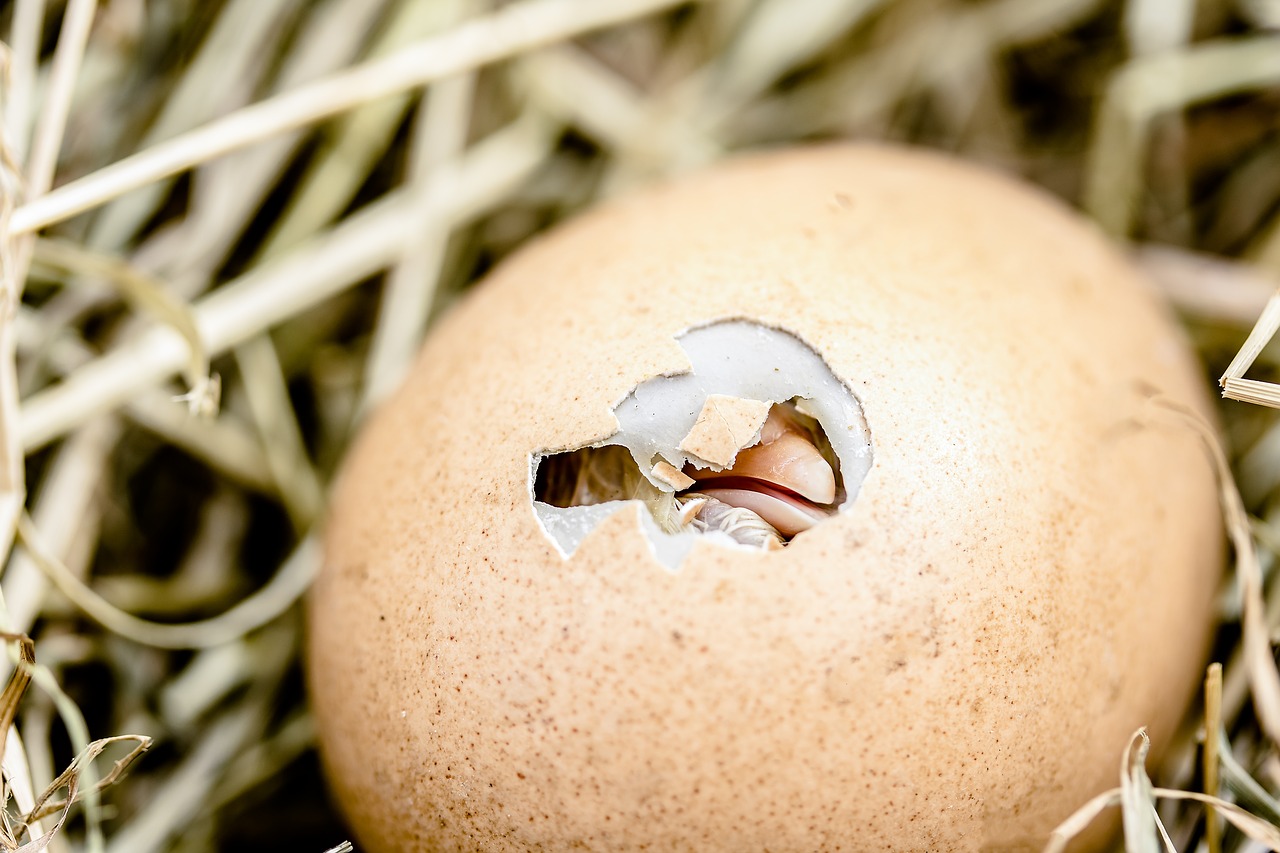 I’ll get right to the hatching part. Maybe in a later blog I can talk about how the egg is formed. After egg-laying begins (most birds lay more than one in a clutch), incubation begins. It may begin right after the first egg is laid or only after all of them are laid. Incubation means adding heat to the eggs and birds do this by molting feathers from their lower abdomen so the skin is exposed. This “incubation patch” becomes infused with blood so that body heat can be transferred to the eggs. One or both parents may incubate. Depending on the species of bird, incubation might only be a week or two (most songbirds) or as long as two months in some penguins.
I’ll get right to the hatching part. Maybe in a later blog I can talk about how the egg is formed. After egg-laying begins (most birds lay more than one in a clutch), incubation begins. It may begin right after the first egg is laid or only after all of them are laid. Incubation means adding heat to the eggs and birds do this by molting feathers from their lower abdomen so the skin is exposed. This “incubation patch” becomes infused with blood so that body heat can be transferred to the eggs. One or both parents may incubate. Depending on the species of bird, incubation might only be a week or two (most songbirds) or as long as two months in some penguins.
An egg can withstand a lot of environmental changes before incubation. Chicken eggs from the store are good for six weeks or so. In some countries they are even displayed on unrefrigerated shelves. But once incubation begins and the young bird starts to develop, the egg is very sensitive to temperature changes and any more than a few degrees too high or low will cause the embryo to develop abnormally or die. So the parents have to be especially attentive; their incubation/brood patch contains sensory nerves that tell them whether the eggs are at the proper temperature. Ornithologists found this out by placing copper eggs in birds’ nests and measuring the eggs’ temperature.
The young bird inside the egg needs to breathe and rid itself of waste products; these problems are neatly addressed by special membranes and tissues inside the egg. To distribute heat evenly and prevent tissues from sticking to the egg shell and blocking air exchange, the parents turn the eggs. Bushtits glue their eggs to the bottom of a swinging socklike nest to prevent the eggs from breaking in a strong wind; the swinging of the nest substitutes for the turning of the eggs.
The Australian Mallee Fowl or brush turkey is exceptional in that it doesn’t incubate its eggs by sitting on them. Instead, it builds a large compost pile of leaves and twigs, lays its eggs in the pile, and then manipulates the content of the pile to adjust the heat generated by the process of decomposition.
Young birds have a “hatching tooth” and special muscle (as do snakes) that allows the hatchling to move its head upwards with enough force to crack the egg with its tooth. We know that ducklings about to hatch can communicate through their shell to their mother to ask her to turn the egg so that the hatchling is not trying to hatch upside down. Other birds may do the same.
Once the birds have hatched, they may stay in the nest for another period of time from a week to a couple of months, depending on the species, until they are ready to leave the nest, or, as it is in waterfowl, cranes, and chicken-like birds, the young are ready to follow their mother around to learn about this new world of theirs.
Thanks for a marvelous posting! I definitely enjoyed reading it, you may be a great author.
Thanks. I have authored 11 books.
It’s a wonderful posting. I like reading this kind of posting .Hope you will write more. I know some information about The Ruby-throated hummingbird. This bird species has a clutch size of 1-3 eggs, with an egg width of 0.3” and length of 0.5”-0.6”. The nesting period is 18-22 days, and birds incubating eggs time is within 12-14 days. The hatched white eggs are small and lightweight at 0.5g. I hope you will like it.
Thanks a lot for nice article. Sir, please tell me whether altricial birds ( chicks) have egg tooth and are able to crack the egg?
Yes
Thank you, Sir.
Pingback: The Hatching Muscle – Ornithology - Specialpets
Pingback: The Hatching Muscle – Ornithology